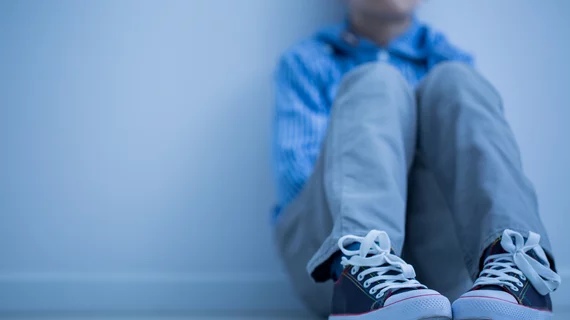Chest CT outperforms radiograph to detect rib fractures in child abuse cases
Chest CT scans are more diagnostically accurate than chest radiography for postmortem rib fracture detection in cases of physical abuse in children regardless of a radiologist's experience or fracture location, according to research published in the Sept. issue of The Lancet.
Rib fractures in infants and children are highly specific to physical abuse. In 30 percent of abuse cases, rib fractures are the only skeletal abnormality present and are found in a third of infants who die due to physical abuse, wrote lead author Own Arthurs, PhD, a consultant pediatric radiologist at the Great Ormond Street Hospital for Children in London, and colleagues.
Although chest radiography is the standard method for identifying rib fractures, the researchers explained chest CT could provide greater accuracy and provide clarity and guidance for medicolegal proceedings in physical abuse cases.
Data from the radiology information system at the Great Ormond Street Hospital was analyzed for all children aged zero to 16 years who had a full-body radiography exam, CT scan and full autopsy between January 2012 through January 2017 for forensic investigation.
A total of 25 cases of children (between the ages of one month to seven years) with a combined total of 136 rib fractures were selected for analysis.
A total of 38 international volunteer radiologists varying in level of experience were blinded to the clinical image information. All analyzed the set of chest radiographs to identify the presence of rib fractures, fracture location and reported the confidence level of their interpretation. One month later, the radiologists compared their detection of rib fractures in the chest radiographs to CT scans of the same cases.
Overall, all 38 radiologists found three-times as many rib fractures correctly detected by chest CTs compared to chest radiography, the researchers wrote. Chest CT also outperformed radiography in detection sensitivity of the correct rib and diagnosis of a patient with any rib fracture. All radiologists reported to have higher confidence when using CT imagies than radiographs, as well.
The researchers recommend the use of chest CT in both post-mortem evaluation of suspected children physical abuse cases as well as in cases in living children when chest radiography is negative or unclear.
“Together with evidence that hospitals, social workers, parents, and children adhere poorly to the schedule of follow-up radiographs, we argue that the use of CT in the acute setting in which radiographs are negative or unequivocal will probably identify otherwise undetected rib fractures, providing immediate diagnostic information, which is preferable to waiting for follow-up radiographs,” Arthurs et al. wrote. “Because all infants suspected of physical abuse will undergo a head CT to look for intracranial injury as per national guidelines, we argue that the addition of a subsievert chest CT during the same attendance would be pragmatic.”

